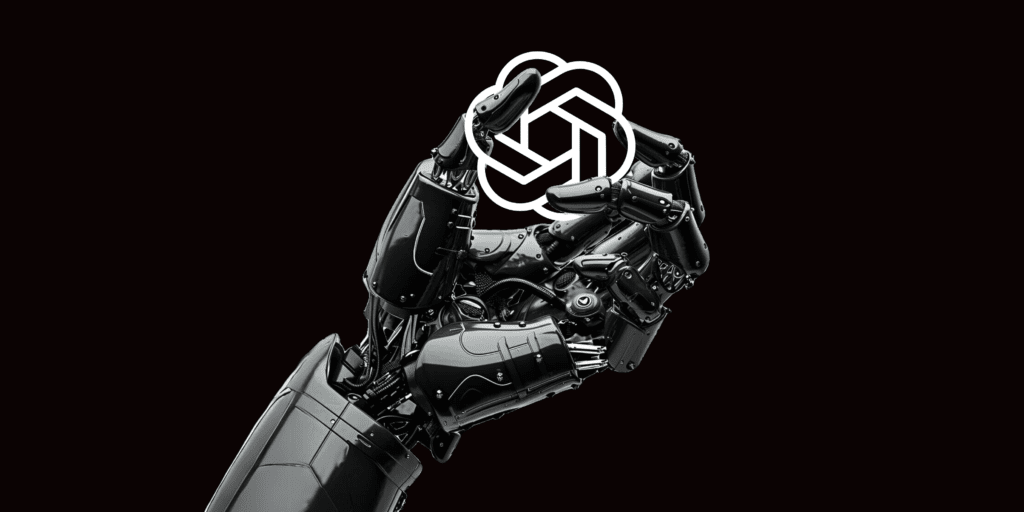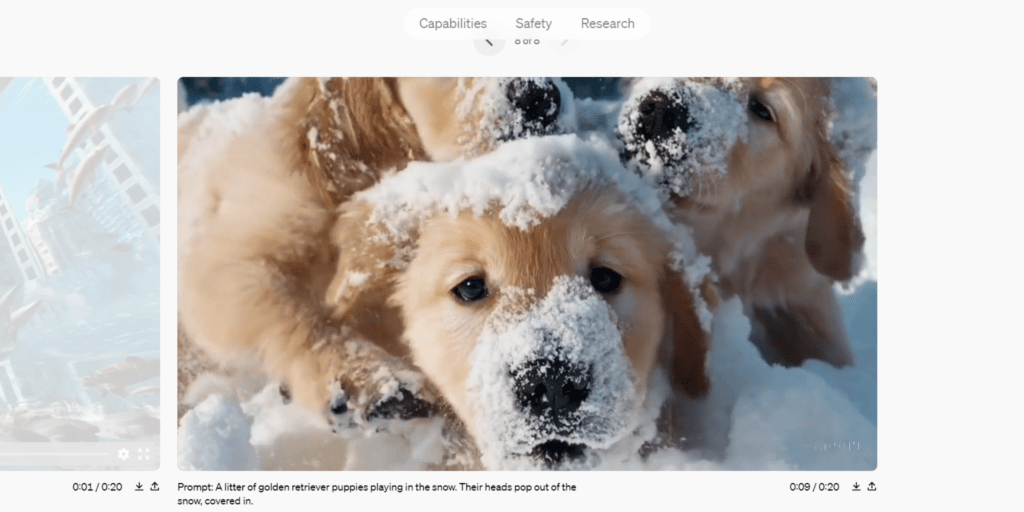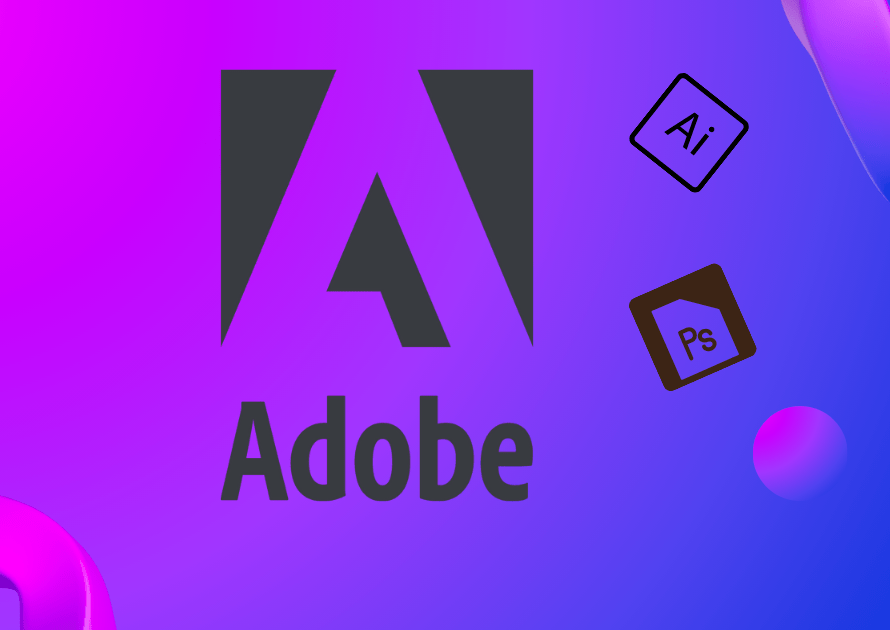Open AI has consistently been at the forefront, introducing groundbreaking technologies that redefine our interaction with digital content. From the linguistic prowess of ChatGPT to the imaginative visuals of DALL-E, Open AI has paved the way for creative and practical AI applications.
Continuing this trend, Open AI introduces its latest marvel, Sora, a text-to-video generator poised to revolutionize the way we create and consume video content. Sora’s announcement has stirred excitement and curiosity within the tech community and beyond, promising to deliver minute-long, high-quality videos crafted from mere text prompts.
This introduction will explore its capabilities, how it compares to its predecessors, and the potential it holds to impact various industries, from filmmaking to education, by turning imaginative concepts into visual realities. Open Ai’s latest step towards blurring the lines between artificial intelligence and artistic creativity.
What is Sora?
Sora is Open Ai’s innovative leap into the realm of text-to-video generation, marking a significant advancement in artificial intelligence’s ability to create complex, dynamic visual content from textual descriptions.
This AI model is designed to understand and translate written prompts into realistic, high-quality videos that last up to a minute. Users can conjure up videos featuring multiple characters, objects in motion, and various backgrounds, all tailored to the specifics of the input text.
Beyond just visualizing scenes, It is capable of generating videos with multiple shots, providing a cinematic quality to the generated content.
One of the most remarkable aspects of Sora is its intuitive grasp of how elements should interact in the real world, reducing the need for overly detailed prompts.
This means that users don’t have to be excessively specific about every aspect of the video they want to create; Sora can fill in the gaps with a reasonable degree of accuracy and realism. Whether it’s for creating educational content, entertainment, or marketing materials, It offers a versatile platform for bringing ideas to life.
Despite its powerful capabilities, Sora is still in its early stages, and OpenAI has acknowledged that there are limitations to what the model can do at present.
The expectation is that these capabilities will expand and refine over time, much like Open Ai’s previous products, ChatGPT and DALL-E, which have seen significant improvements and expanded use cases since their introduction.
The access is limited to a select group of individuals, including Open Ai’s Red Teamers, filmmakers, and visual artists, who are providing feedback to refine and improve the product for broader use.
This strategy reflects Open Ai’s commitment to responsibly developing and deploying AI technologies by ensuring they are safe and beneficial before making them widely available.

How to Access Sora
OpenAI’s groundbreaking text-to-video generator is currently exclusive and not available to the general public. OpenAI has taken a cautious approach to rolling out Sora, initially making it accessible only to a select group known as OpenAI Red Teamers, as well as a handful of filmmakers and visual artists.
This strategy is part of OpenAI’s broader effort to ensure the responsible and safe development of AI technologies by gathering feedback from experts in various domains.
The Red Teaming Network comprises domain experts from diverse fields who collaborate with OpenAI to test its products thoroughly. These experts assess potential technical or safety concerns that might arise from the use of these products.
Their feedback is crucial for identifying and mitigating risks, ensuring that new technologies like Sora are not only innovative but also secure and beneficial for users.
Open AI CEO Sam Altman has been actively engaging with users on X, inviting them to submit prompts for Sora to generate videos.
This interaction has provided the public with a glimpse of Sora’s capabilities, showcasing a range of AI-generated videos that illustrate the model’s potential. Examples shared by Altman include:
A bicycle race on the ocean with different animals as athletes, captured from a drone camera view. An instructional cooking session for homemade gnocchi by a grandmother social media influencer in a rustic Tuscan country kitchen with cinematic lighting.
OpenAI has also made some examples of Sora-generated videos available on its official website. These samples offer insights into the variety and quality of content that Sora can produce, serving as inspiration for potential users and demonstrating the technology’s capabilities.
While there is no official announcement regarding when Sora will be available for personal or wider public use, OpenAI’s pattern with previous products suggests that broader access could be on the horizon.
The company is likely to expand access gradually, ensuring that Sora meets safety and ethical standards before making it widely available.
For those eager to try Sora or follow its development, staying tuned to updates from OpenAI and participating in community engagements like those offered by Sam Altman on social media platforms may provide the earliest opportunities to experience this innovative technology.
Public Access and Future Plan
The timeline for when Sora will be made available to the general public has not been officially announced by OpenAI. However, based on the company’s history with previous tools like ChatGPT and DALL-E, it is reasonable to anticipate that OpenAI will gradually extend access to Sora.
This phased approach helps manage the implications of widespread use and allows for incremental improvements based on user feedback.
OpenAI’s future plans for Sora likely include enhancing its capabilities and addressing any limitations identified during the initial feedback phase.
Improvements may focus on expanding the range of videos Sora can generate, increasing realism, and ensuring that generated content adheres to ethical guidelines.
Open AI is also expected to closely monitor how It is used and its impact, making adjustments as necessary to align with its commitment to AI safety and responsible deployment.
A critical aspect of It’s development and future deployment involves addressing ethical and safety concerns. This includes ensuring that the AI respects copyright laws, protects privacy, and does not produce harmful or misleading content. Open AI has shown a commitment to these issues in the past and will likely continue to prioritize them as Sora evolves.
OpenAI may continue to engage with the community and potential users through social media and other platforms, offering previews of Sora’s capabilities and collecting input on its development. These interactions can help shape Sora’s trajectory, ensuring it meets the needs and expectations of a diverse user base.
The progresses from a limited-access tool to a potentially widely available product, Open Ai’s plans will likely focus on making the technology accessible and useful for a broad audience.
This includes developing user-friendly interfaces, providing resources and support for new users, and exploring applications across various industries and creative domains.

Final Thoughts
Open Ai’s text-to-video generator, represents a significant milestone in the field of artificial intelligence, offering a glimpse into the future of content creation. With its ability to transform textual prompts into realistic, dynamic videos, Sora embodies the cutting-edge of AI’s creative capabilities.
While currently available to a select group for testing and feedback, the potential for Sora to revolutionize industries such as filmmaking, education, marketing, and beyond is immense.
As OpenAI continues to refine Sora, addressing technical, ethical, and safety considerations, the anticipation for its wider release grows.
The careful approach to deployment reflects a commitment to responsible AI development, ensuring that when Sora becomes accessible to the broader public, it will be a tool that not only inspires creativity but also respects the principles of safety and ethics.
Looking forward, the integration of Sora into the everyday toolkit of content creators could democratize video production, making high-quality, customized video content accessible to all.
This future also poses questions about the implications of AI-generated content on copyright, privacy, and authenticity, challenges that Open AI and the broader community will need to navigate.


